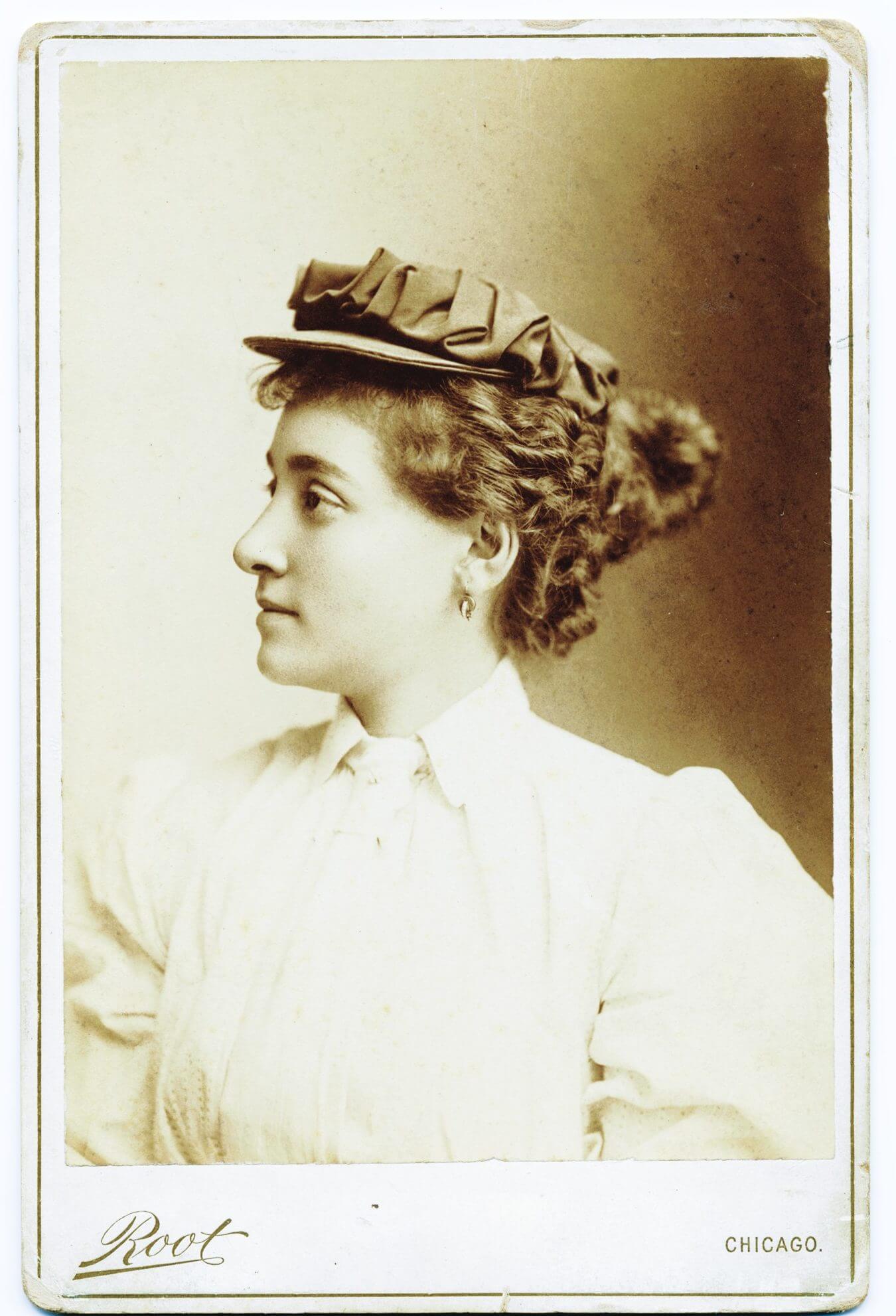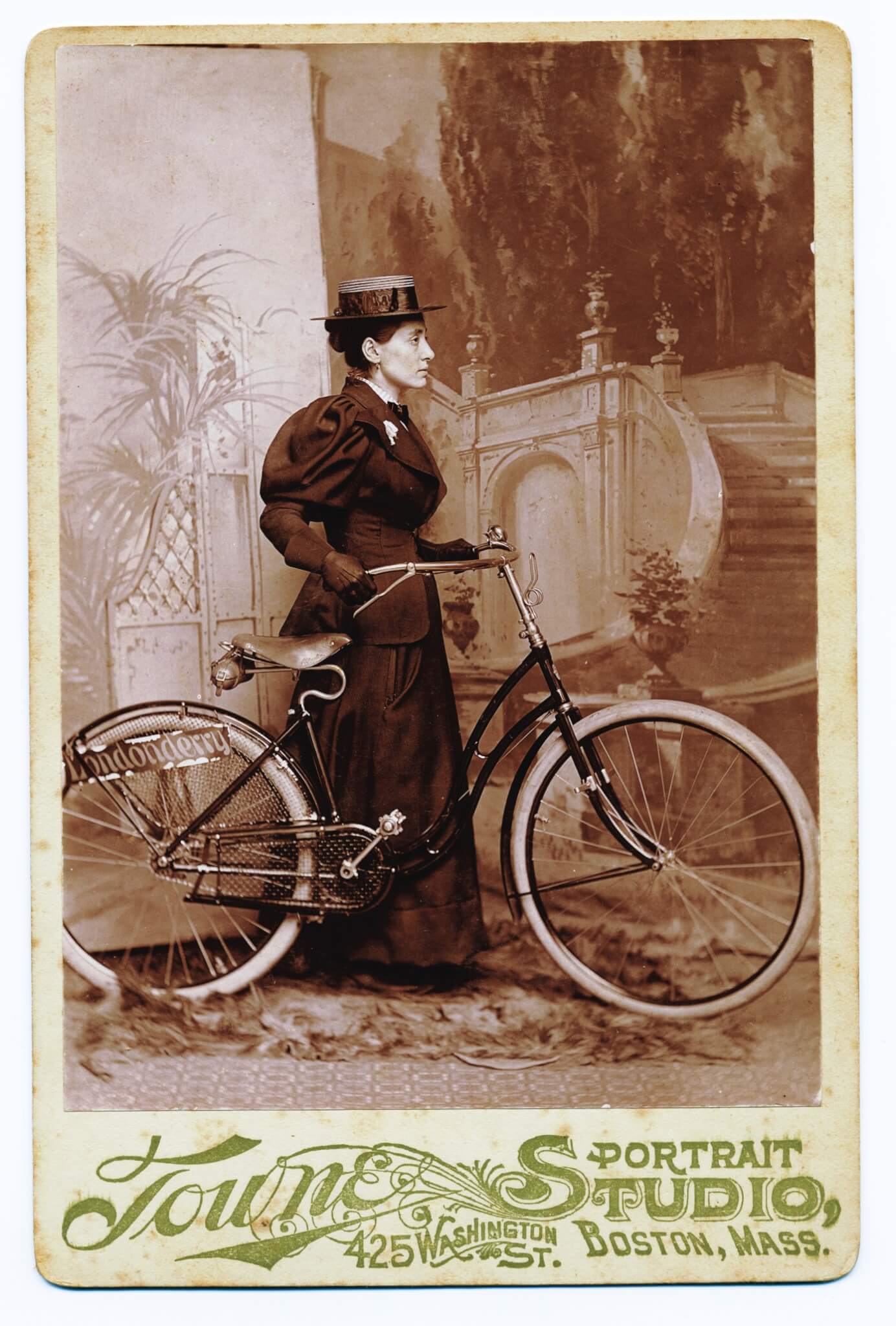Annie Londonderry
Annie Londonderry was a Latvian Jewish immigrant who became the first woman to bike around the world, and the first internationally recognized female athletic star.
Annie Cohen Kopchovsky, also known as Annie Londonderry, was born in Latvia in 1870 to Jewish parents, Levi and Beatrice Cohen, and emigrated to the West End with her family in 1875. She married Max Kopchovsky, a peddler, and had three children by 1892; they were a working-class family living in the West End’s tenements. She is also considered to be the “world’s first international female sports star” because of her iconic bicycle ride around the world. While the British man Thomas Stevens was the first person to ride across the US and the world in 1884, Londonderry was determined to be the world’s first woman to achieve the same feat; she was hoping to settle a bet, and receive $10,000, if she could prove that women had physical capabilities equal to men. The bet may have been a tall tale, as the Boston Journal reported after her journey that the crowd at the State House thought the bet was invented for publicity. “Settling a wager” was something people claimed at the turn-of-the-century to justify activities that may sound ridiculous.
As a twenty-three-year-old mother with three children, Londonderry bicycled from Boston across the United States, and subsequently around the world from June 1894 to September 1895. When she left Boston, a reporter wrote that Londonderry “sailed away like a kite down Beacon Street.” This was also a moment when many more women were riding bicycles for the first time. Londonderry kept her family secret on most of the journey, and she chose the name “Londonderry” from her corporate sponsor, the Londonderry Lithia Spring Water Company in Nashua, New Hampshire. Annie was considered a “rolling billboard” because an advertisement for the company was hooked onto the bicycle, and she received $100 to finance her journey. Londonderry’s ride-around-the world was not only a remarkable athletic feat, it also reflected a turning point in the women’s movement and women’s cultural autonomy. As Susan B. Anthony told the journalist Nellie Bly in an 1896 interview with the New York World, “Let me tell you what I think of bicycling. I think it has done more to emancipate women than anything else in the world.”
With the invention of the “safety bicycle,” which had equally-sized wheels and a chain, made riding a bike more fun and less dangerous. While those bicycles were mass produced for men to commute to work, women took to cycling for freedom outside the home. This led also to the rise in bloomers over corsets or skirts as a style choice, to make bike riding more comfortable. While Londonderry originally rode a “woman’s bike” (made by Columbia) in a dress on her three-month journey from Boston to Chicago, on mostly unpaved roads, she switched to a lighter men’s bike, made by Sterling, and bloomers. Women’s bikes tended to be heavier and less mobile, such that the Columbia bicycle weighed fifty pounds, versus the Sterling’s twenty-one pounds. But Londonderry prioritized mobility and speed in her ride, not the restrictive cultural mores attached to consumer goods, which reflected her identity as one of the “new women” advocated by suffragists. This was despite the fact that in response to the intrigue around her stories of hunting tigers in India or witnessing the Sino-Japanese war (which she told to raise funds in different cities), some wondered if she was actually a woman (of course, she was).
Much of Londonderry’s journey may have happened by trains and ferries with a bicycle, not necessarily with her on the bicycle the whole time. However, she absolutely rode her bicycle across many thousands of miles and saw many places in her journey from France, to North Africa and the Arabian Peninsula, to Sri Lanka, Singapore, and other parts of Asia (along with a steamship to San Francisco and a bike ride back to Boston). According to journalist Peter Zheutlin, who is the great-grand-nephew of Annie Londonderry, in his foundational biography of her in 2007, “During the course of Annie’s around-the-world journey she logged thousands of miles by bicycle, and it could be argued that she was genuinely the first woman to cross the American continent by bicycle, even if she hopped the train from time to time.” But while Londonderry may not have literally circumnavigated the world (because of water), she was on the bicycle just as often as ships or trains, and the attempt itself was still groundbreaking for women.
Londonderry died of a stroke in 1947 while in New York City, but we can remember that as a Boston resident, her journey went from the West End to the world and back!
Article by Adam Tomasi, edited by Sebastian Belfanti









